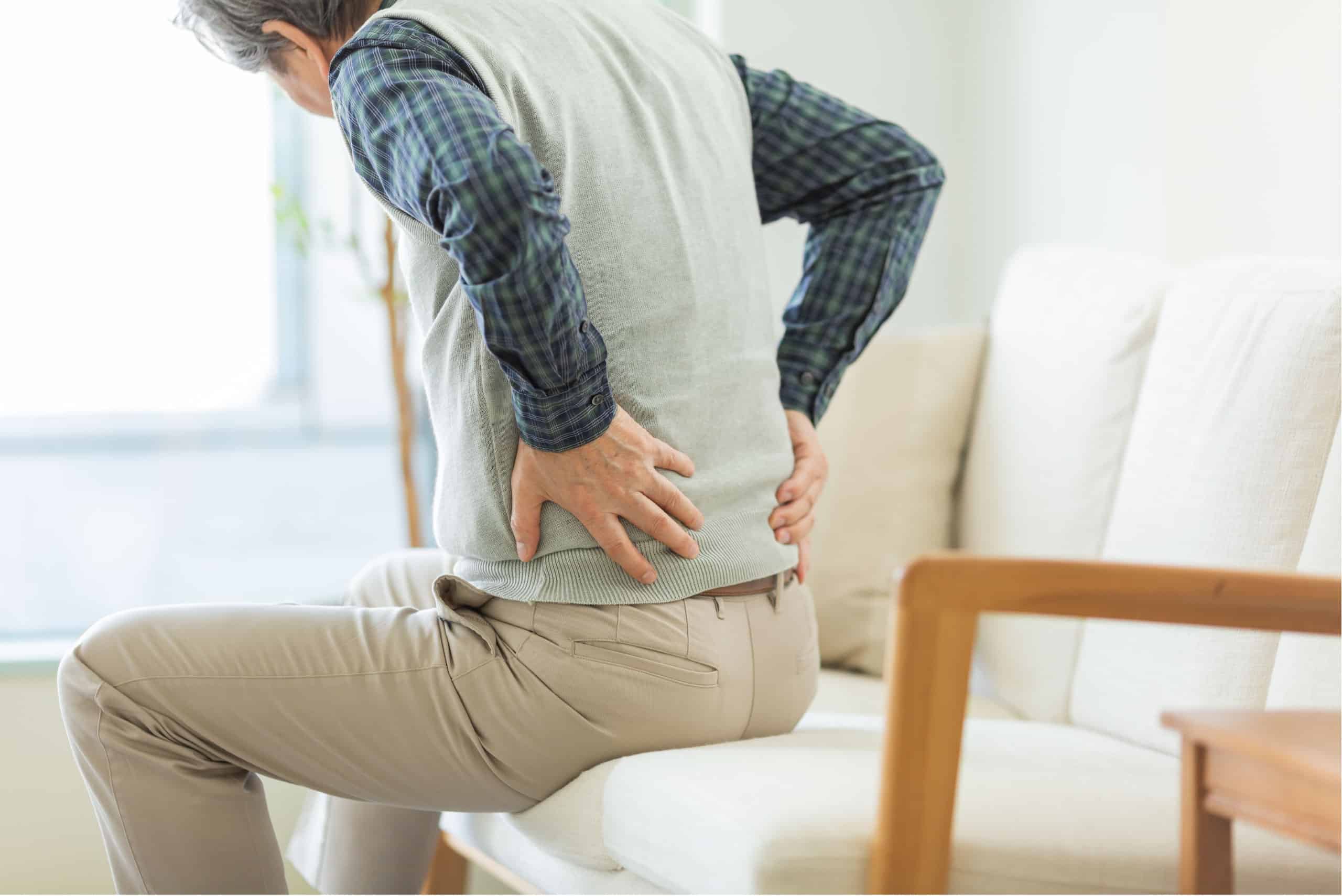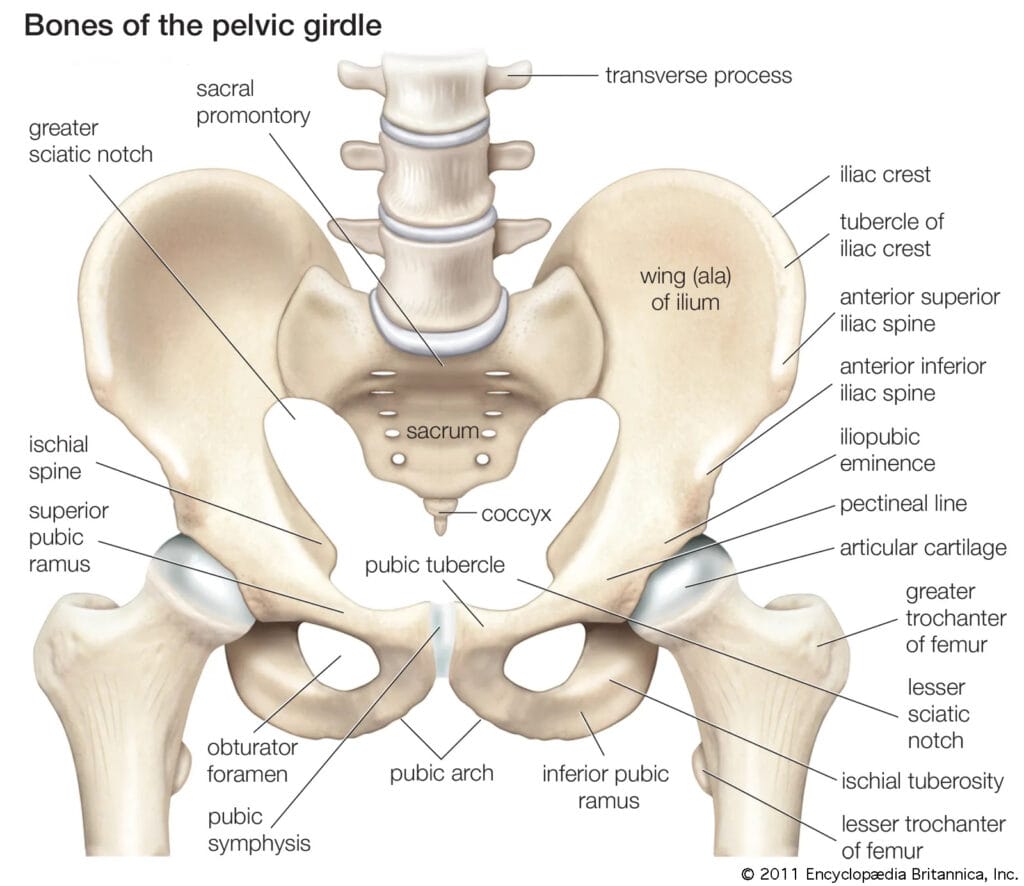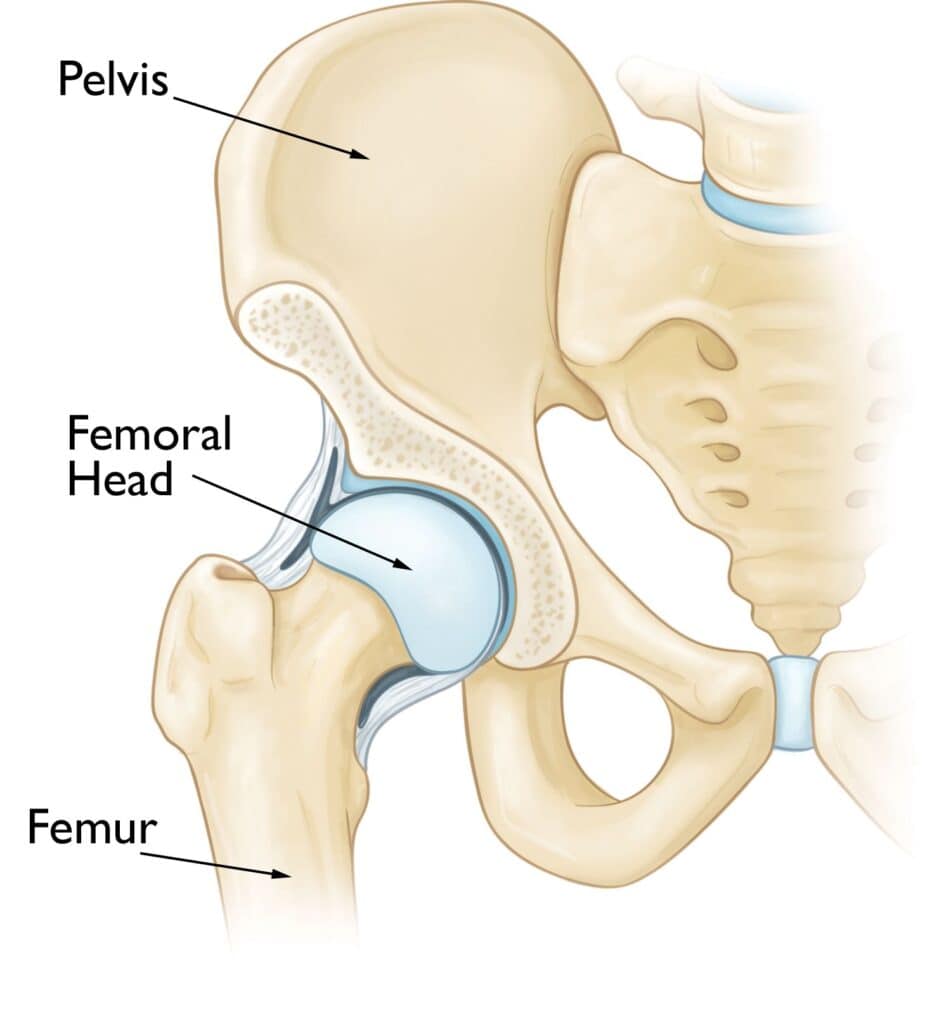
Groin pain can mean underlying problems with the hip joint. The hip is a joint formed by the pelvis bone and the hip bone (femur). This is deepened by a ring of cartilage that helps to stabilize the joint, which is known as the labrum. The groin is the area at the front of your body where your legs join the body. When we refer to groin pain, we mean pain that is felt at the front in the skin crease that forms when the legs bend (during sitting for example).
Problems around the hip, including muscle problems, can cause pain at the side of the hip joint. Pain that occurs in the region of the buttocks are usually not from the hip, but may be related to back problems instead. Occasionally, patients with hip problems may also experience pain at the inside of the knee. This is a phenomenon known as referred pain, and is due to common shared nerves that pass through these areas.


A multitude of hip problems can result in groin pain. This can be grossly divided into injury related and non-injury related. As the hip is a deep seated joint that is well protected by muscles, any injury to the bones of the hip tends to be high energy. Low energy hip injuries usually occur in elderly patients who have poor bone stock, which predisposes them to broken bones.
Examples of hip injuries include:
Non-injury causes of hip pain include:
Apart from pain in the groin and at the inside of the knee, hip problems can also cause other symptoms including:
There is a lot of common ground between symptoms of hip pain and knee/back pain, and it is hence recommended that you seek expert medical advice to correctly diagnose your condition.
On first seeing the doctor, he/she will conduct a medical interview focusing on your symptoms. Based on the clues obtained during history, the doctor will conduct a focused examination on the hip and associated areas including the knee and lower back. He/she may also request that you take a short walk in order to assess your gait.
This is typically followed by plain radiographs of the pelvis and hip, which commonly allows the doctor to reach a diagnosis. Sometimes, it may be necessary for the doctor to order an MRI scan of the hip, especially if there is suspected tendon/muscle or cartilage problems in the hip.
Based on the diagnosis and your unique requirements, the doctor will offer a range of treatments curated for your needs.
These may include: